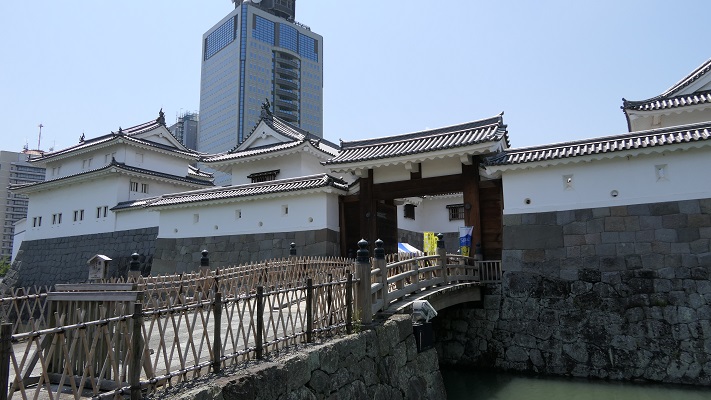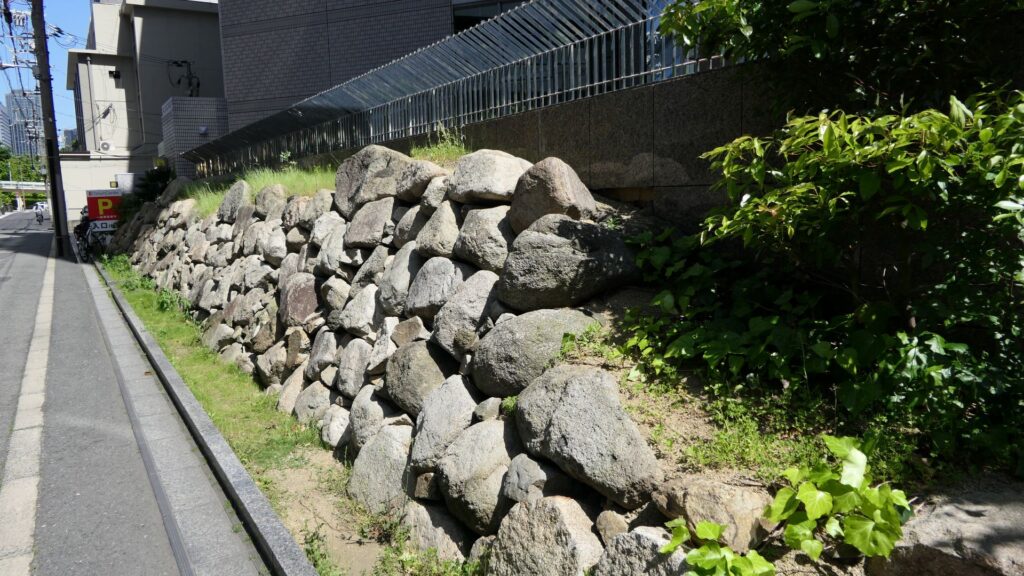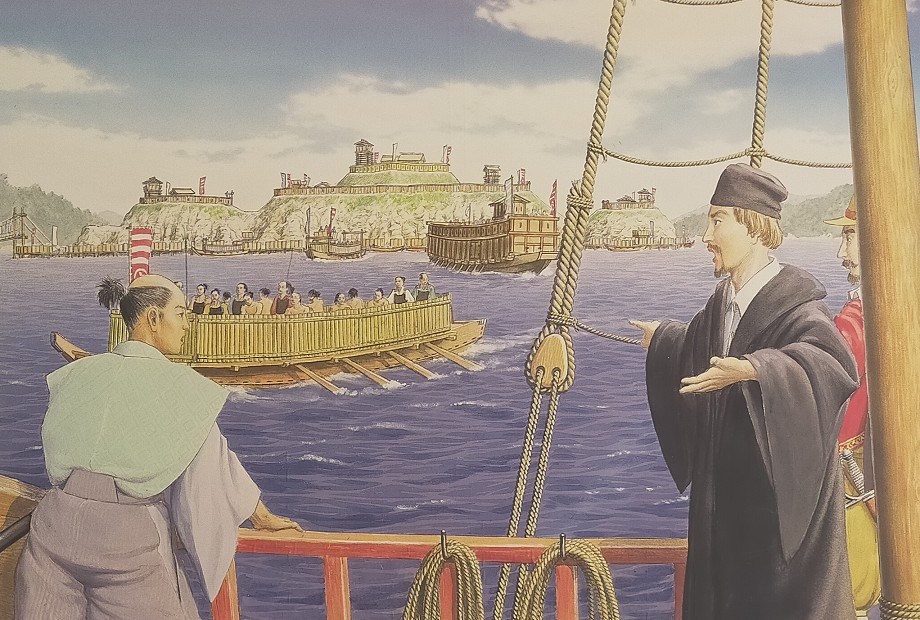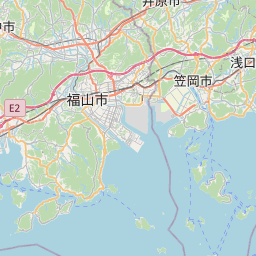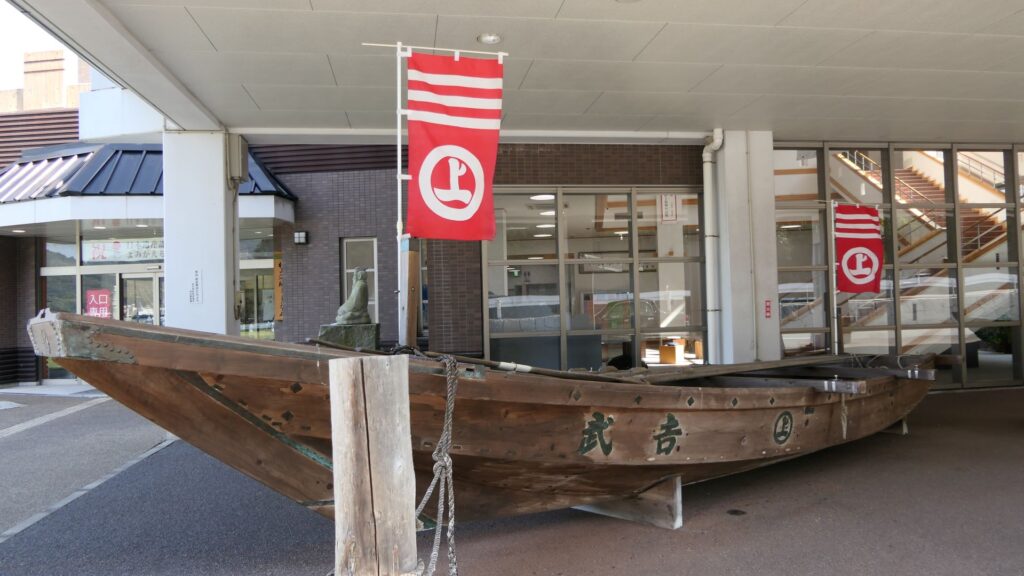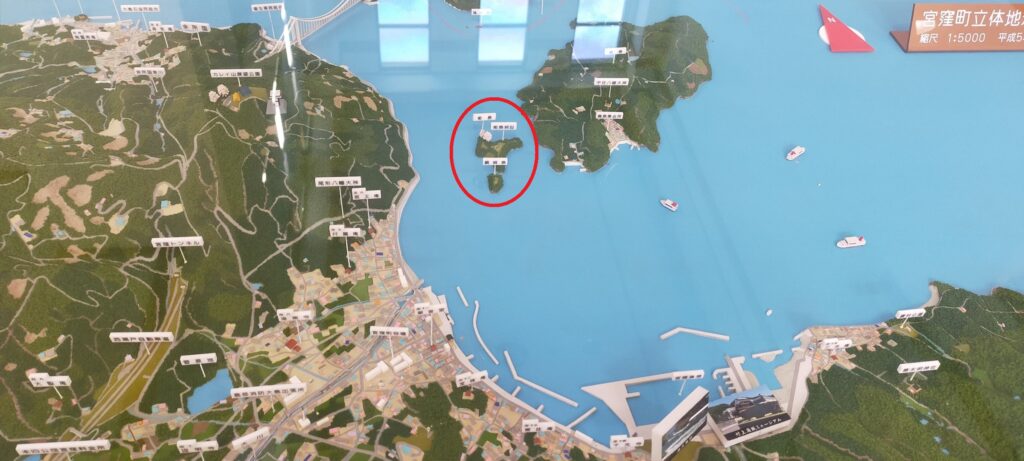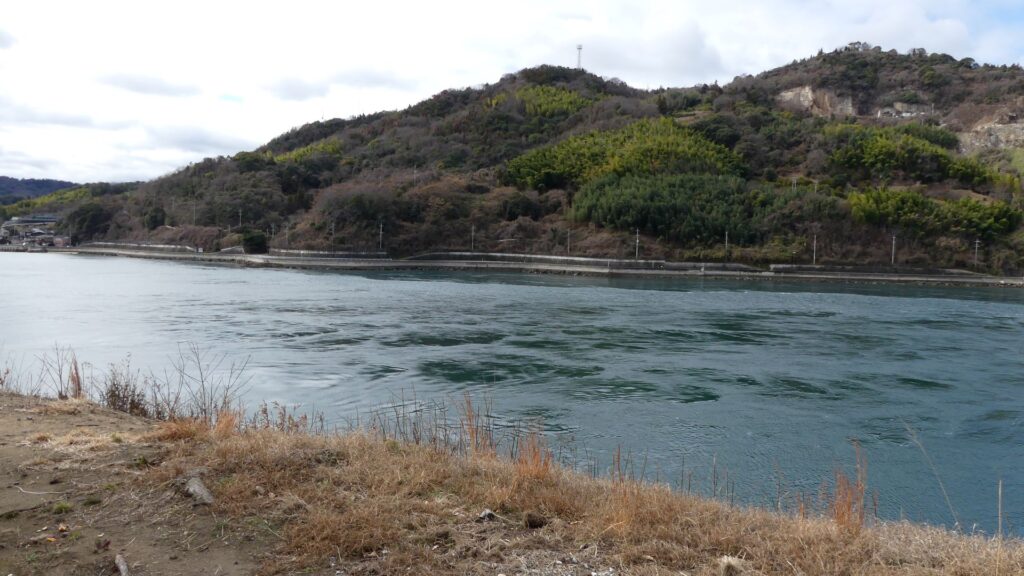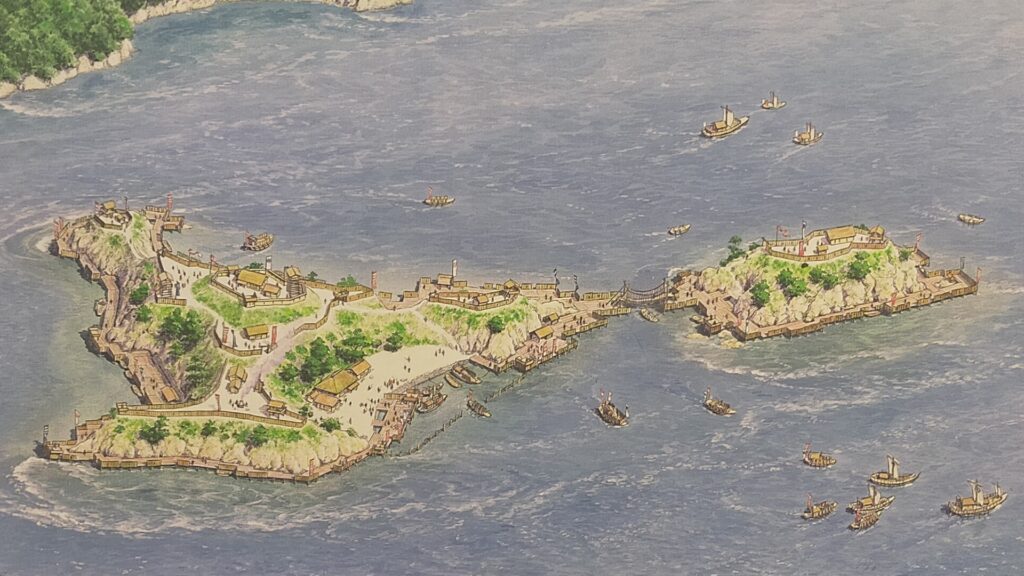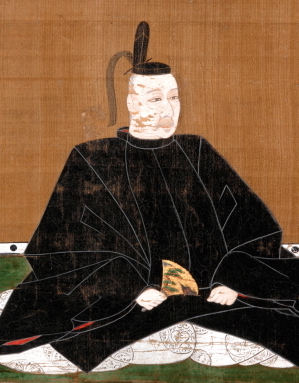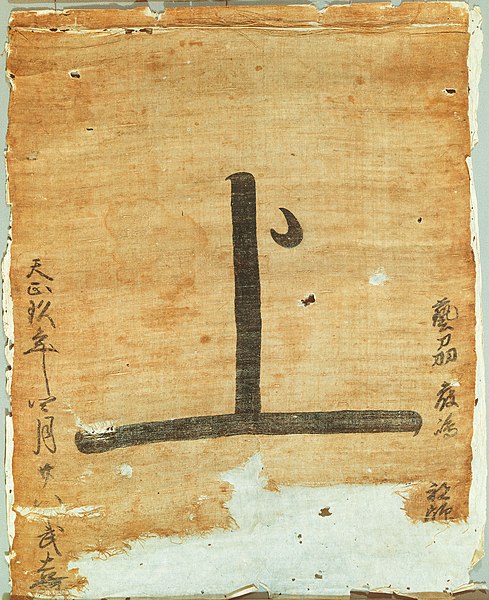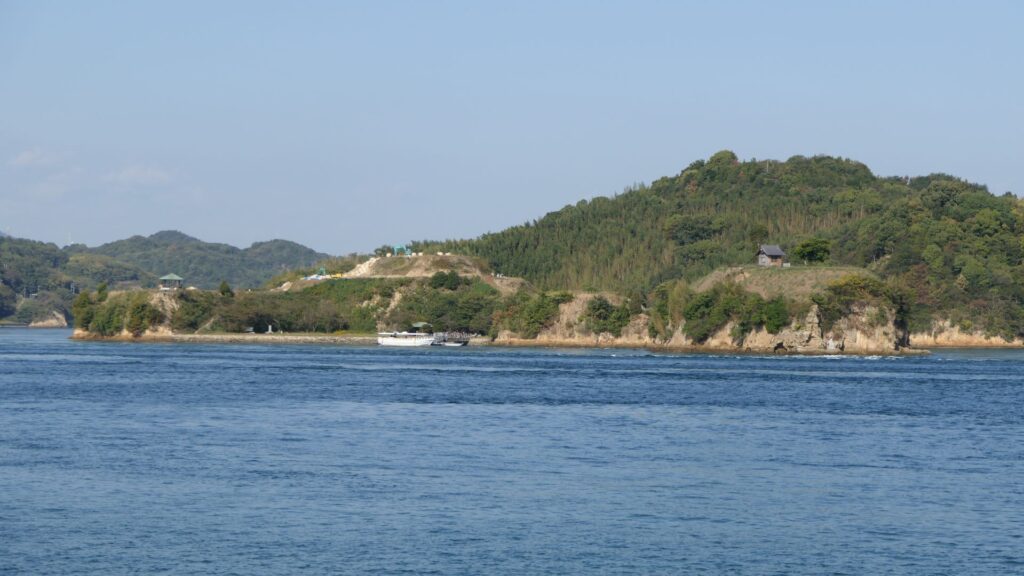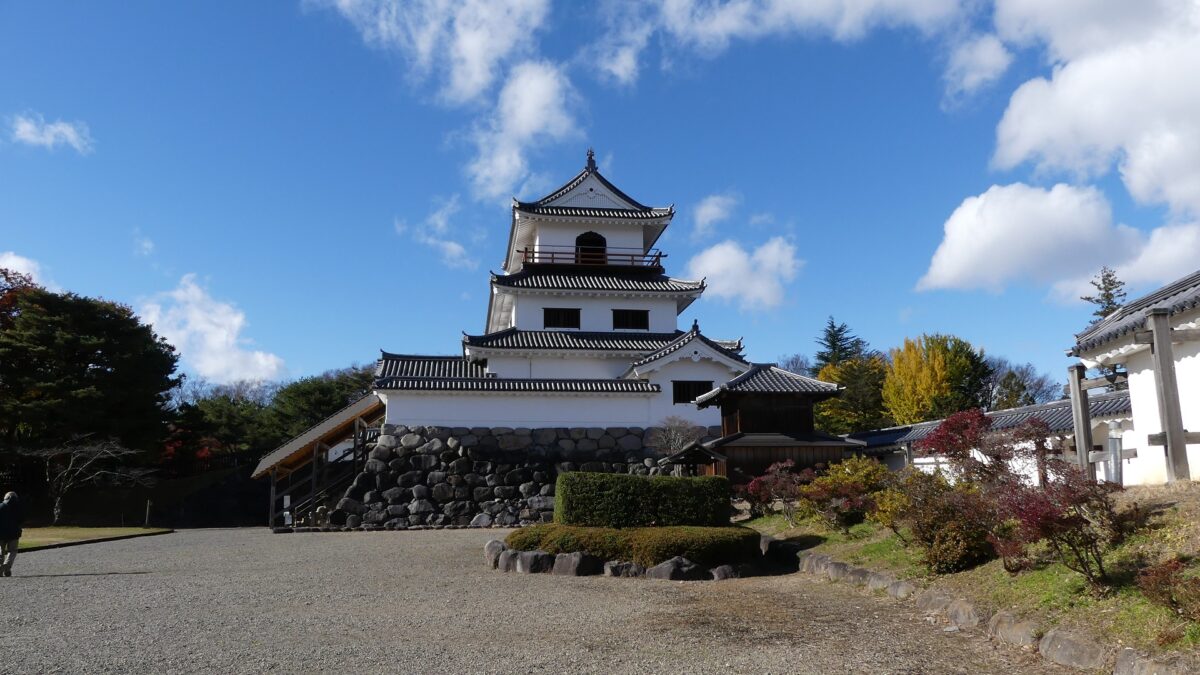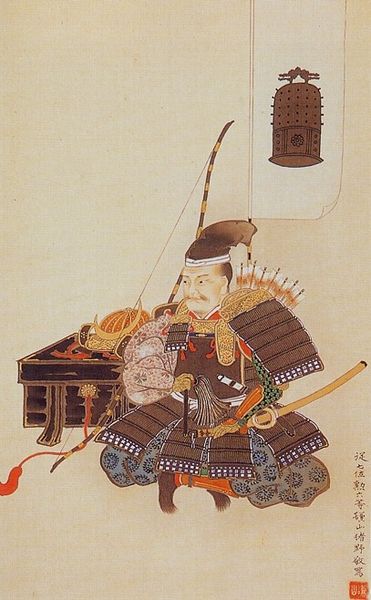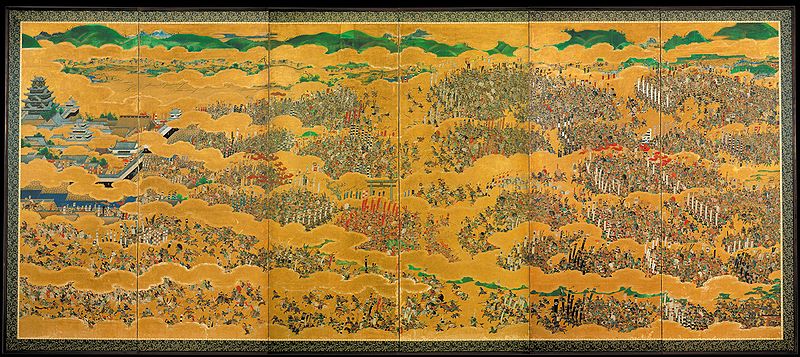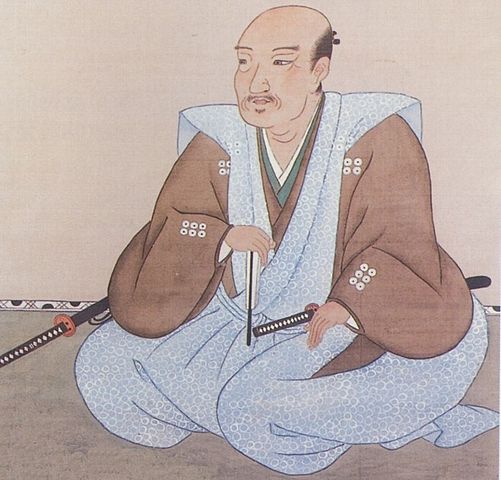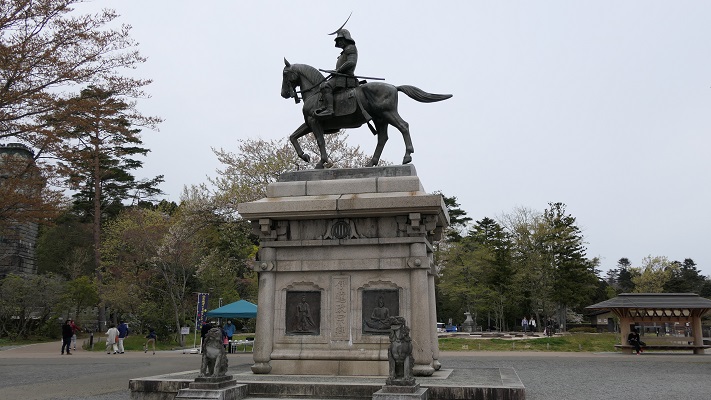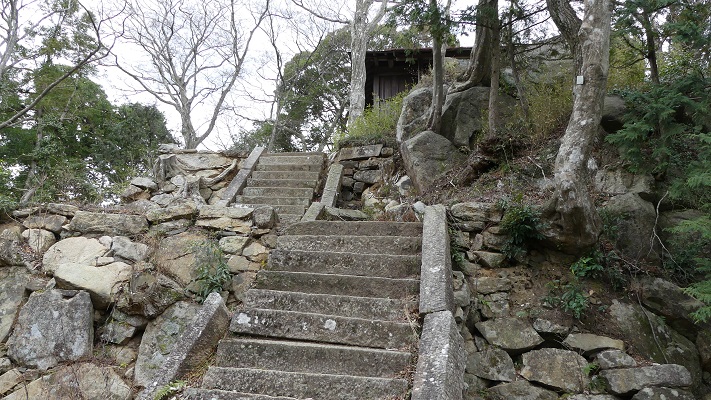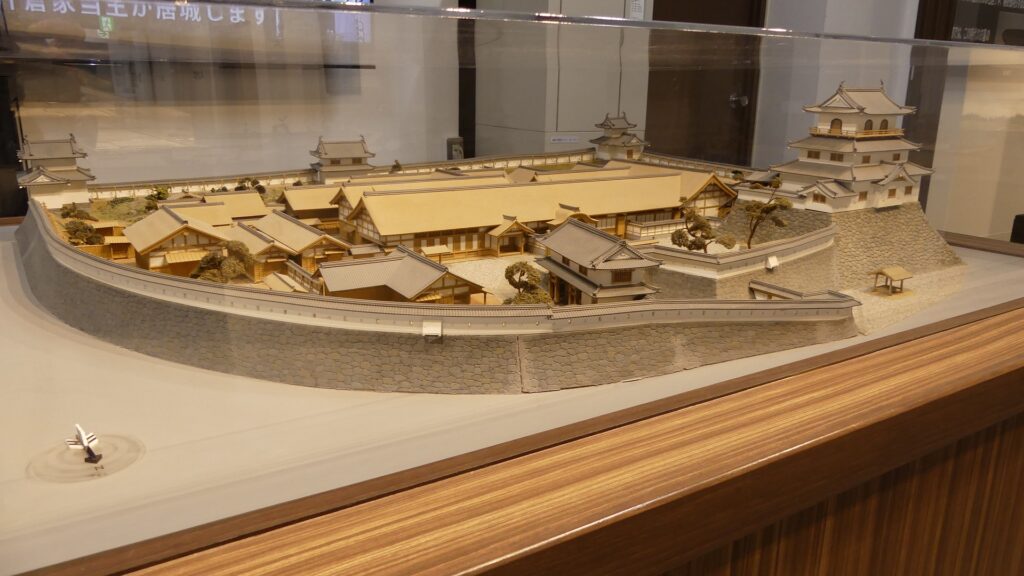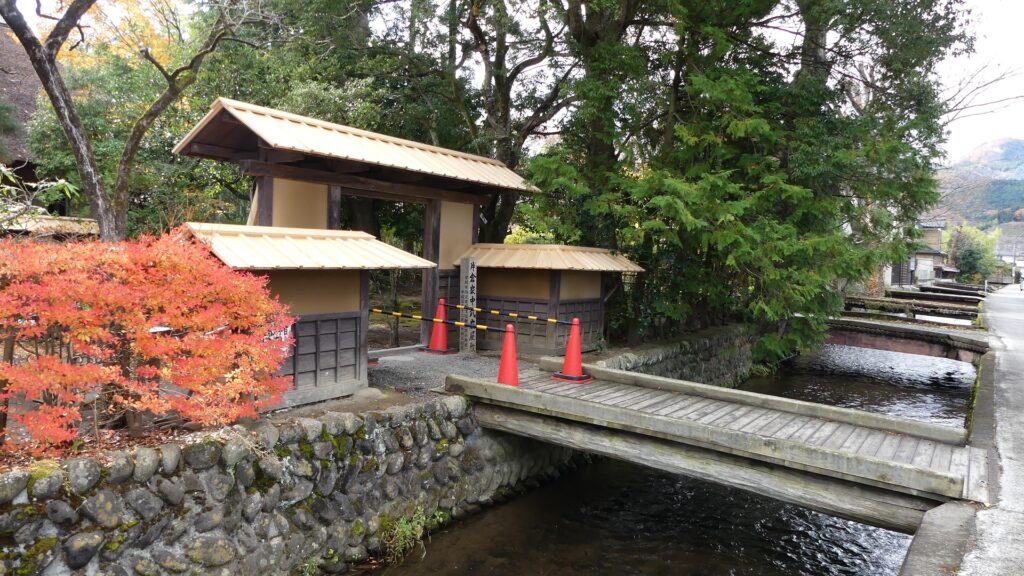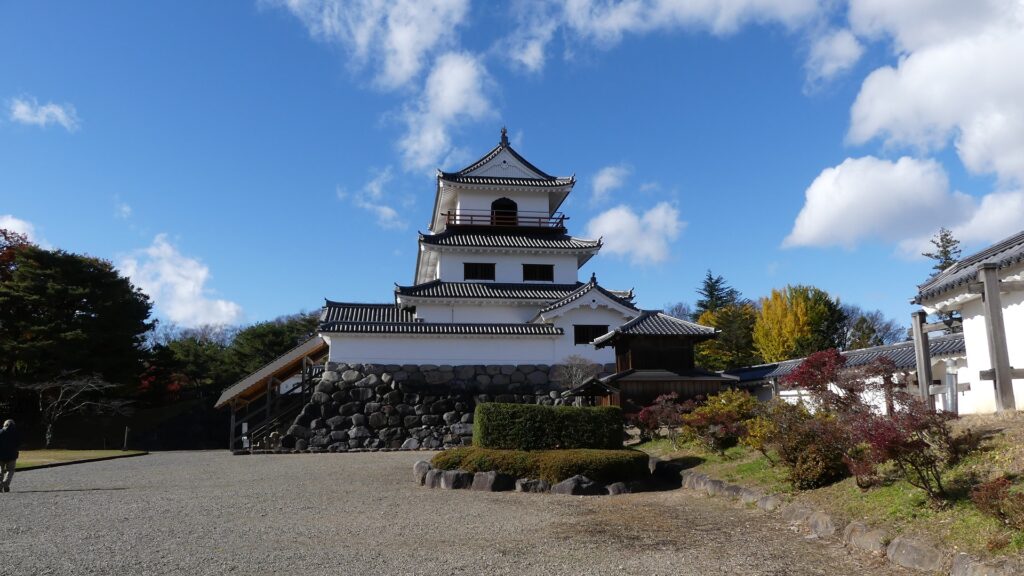Odawara was supposed to be the main castle for the five generations of the Hojo Clan. The city is now supposed to be a popular tourist spot near Hakone hot spring. Odawara Castle first started as a small one in a new transportation hub. The castle eventually grew under the rules of the Hojo Clan to one of the greatest castles during the Sengoku Period. It was finally turned into an important castle at the western edge of the Kanto Region during the Edo Period. The castle was located at the same place through all its life while it changed a lot, which is a very rare case. This article will focus on the history of the castle until the demise of The Hojo Clan during the Sengoku Period.

Location and History (until Sengoku Period)
Beginning of the Castle and the Appearance of Sozui Ise
In the ancient time, passengers, who went to the Kanto Region from western Japan, didn’t often use the Hakone Route, but used the Ashigara Route instead. However, they eventually used the Hakone Route when some shrines near the route became more popular. Odawara was first formed as a transportation hub for the passengers not later than the 14th Century. On the other hand, Odawara Castle was thought to be built in the middle of the 15th Century. The Omori Clan, the first lord of the castle, built it in order to collect taxes from the passengers. For this reason, the castle was still small during its early stage.
As for the location of the castle, it was said that it was first situated at Hachimanyama old enclosure, which is the north of the current Odawara Castle, and further away from the transportation hub. Considering the purpose of the castle, it may have been at the same place as the current one, or at Tenjinyama Hill, closer to the town.

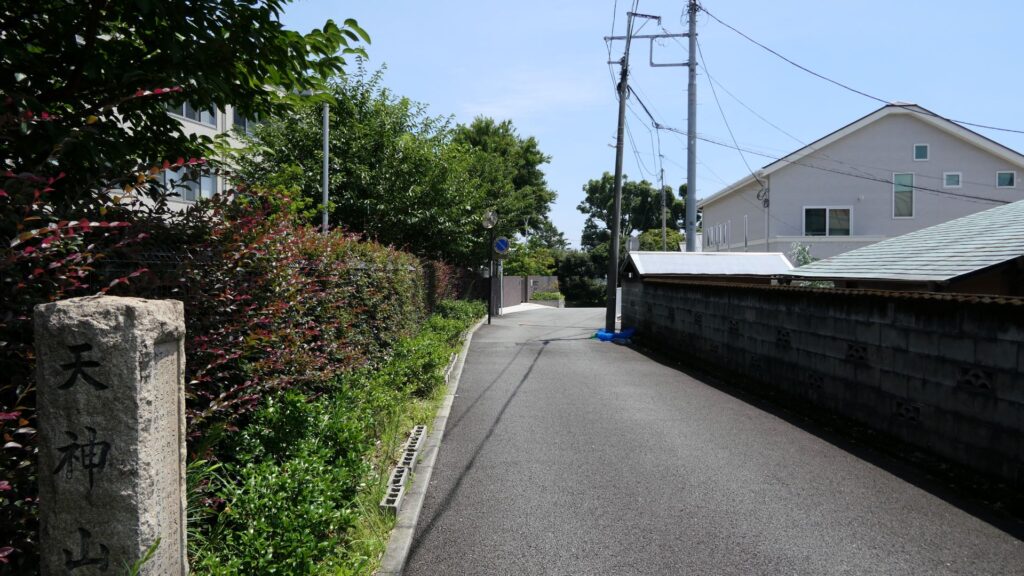
In the beginning of the Sengoku Period, a man named Sozui Ise, became one of the biggest heroes at that time, and later would become a legend. According to the legend, he started only as a Ronin, but eventually became a great warlord, through his own excellent talent. This has been recognized as a big success story of “Gekokujo” which means “giant killer”. However, in recent studies, it was discovered that he was originally a shogunal military guard called Moritoki Ise. He went to Sunpu, which is the current Shizuoka City, to help his sister who was in a dispute about the succession. She was the wife of the Imagawa Clan’s previous lord and wanted her son to be the successor but had to compete with another candidate.
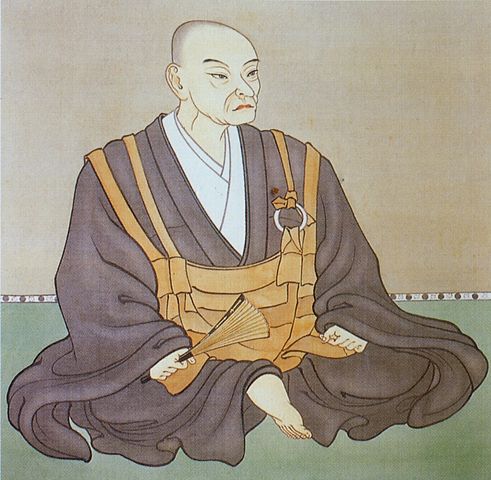
Sozui (Moritoki) succeeded in the son’s victory. He got Kokokuji Castle as an award of his contribution, which was the beginning of his real success story. The legend also says that Sozui drove the Omori Clan, which was the lord family of Odawara Castle, out from the castle, by tactics known as “Kagyu-no-kei”. Kagyu-no-kei refers to attacking enemies’ bases by using cows with lit torches on their horns. It was said that the statics had been done since the start of ancient China. However, the recent studies argue that it’s not that simple. According to a historical record, Sozui’s brother and the Omori Clan were actually on the same side at Odawara Castle and were defeated by the Uesugi Clan. Historians speculate that Sozui got Odawara Castle when they became enemies, or the castle was damaged because of a huge earthquake around 1500. Sozui was probably not only a hero, but also a practical man and a good negotiator. The castle was still a branch castle even after Sozui got it.

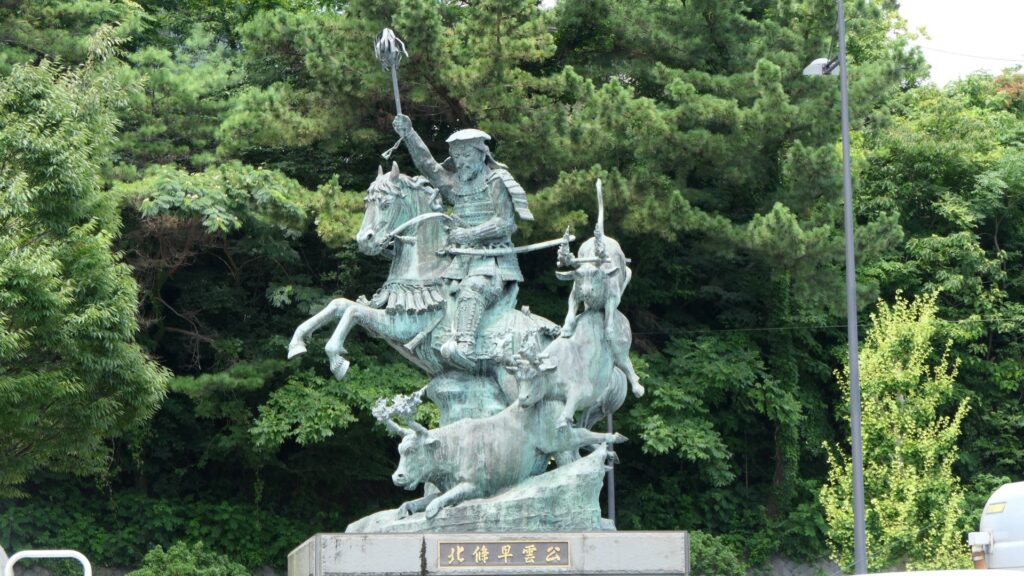
Improvement of the Castle by Ujitsuna and Ujiyasu Hojo
Sozui’s successor was his son, Ujitsuna Hojo, who was the second generation of the Hojo Clan. However, Ujitsuna was the person who changed his family name from Ise to Hojo. Therefore, Sozui Ise’s well-known alternate name Soun Hojo did not exist while he was alive. Soun was his Dharma name (this is the name given after the person dies). The reason for the change of the family name would be to go against the authority of the Uesugi Clan, the Hojo’s enemy. The Uesugi Clan looked down on the Hojo Clan because they were outlaws from another province. The Hojo Clan needed to improve their own authority in order to attract the local lords by using their new family name. “Hojo” had been the family name of the vice-Shoguns during the Kamakura Shogunate. Ujitsuna also moved his clan’s home to Odawara Castle.
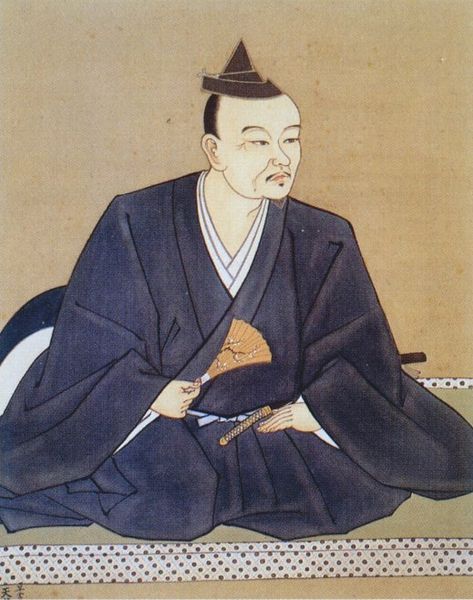
Ujitsuna’s son, Ujiyasu Hojo was the third generation of the clan. He managed to increase the clan’s territories in the southern Kanto Region, particularly after the victory of the battle of Kawagoe Castle against the Uesugi Clan in 1546. Odawara Castle and its town were becoming the center of the region. The original small transportation hub was turned into the castle town, being as large as that during the Edo Period. The Odawara Water Supply System was installed in the castle and the town. It is said to be one of the earliest water supply systems in Japan. As for the castle itself, the main portion of the castle was built, such as the current main and second enclosures. A priest, who visited Odawara Castle in 1551, recorded that there was a large pond surrounding the castle in three different directions. Part of the pond remains as the moat of the current second enclosure.
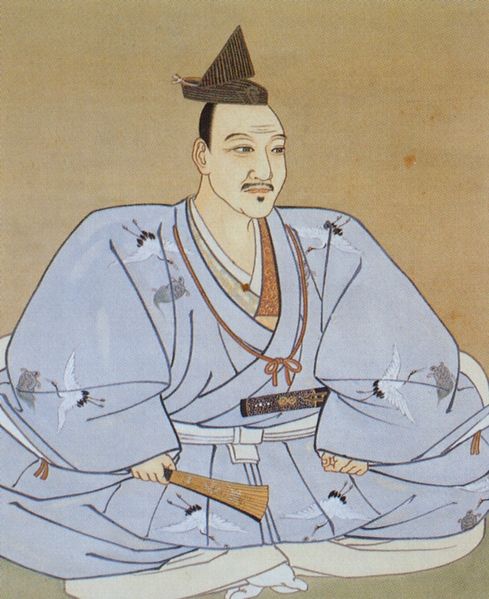
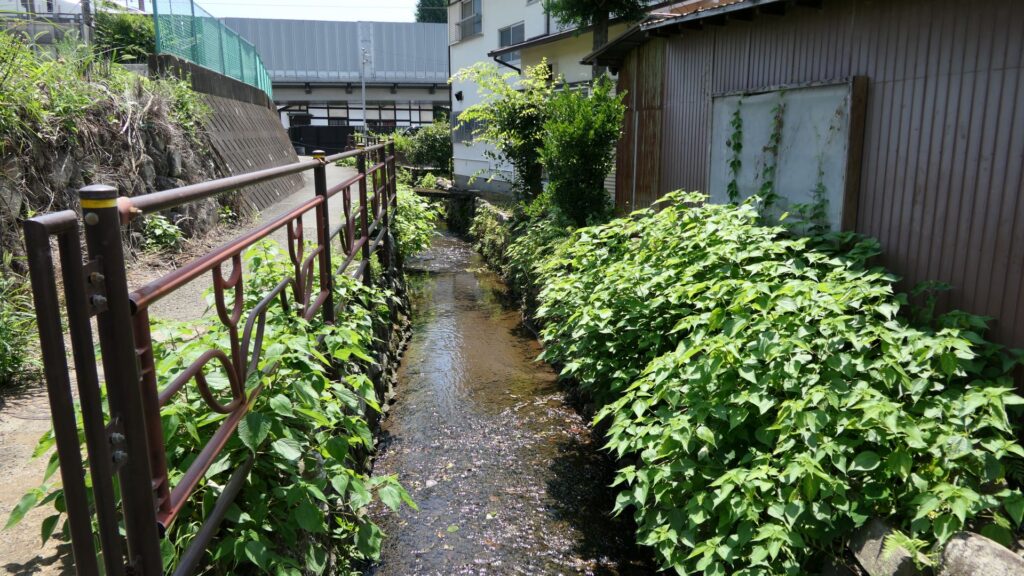
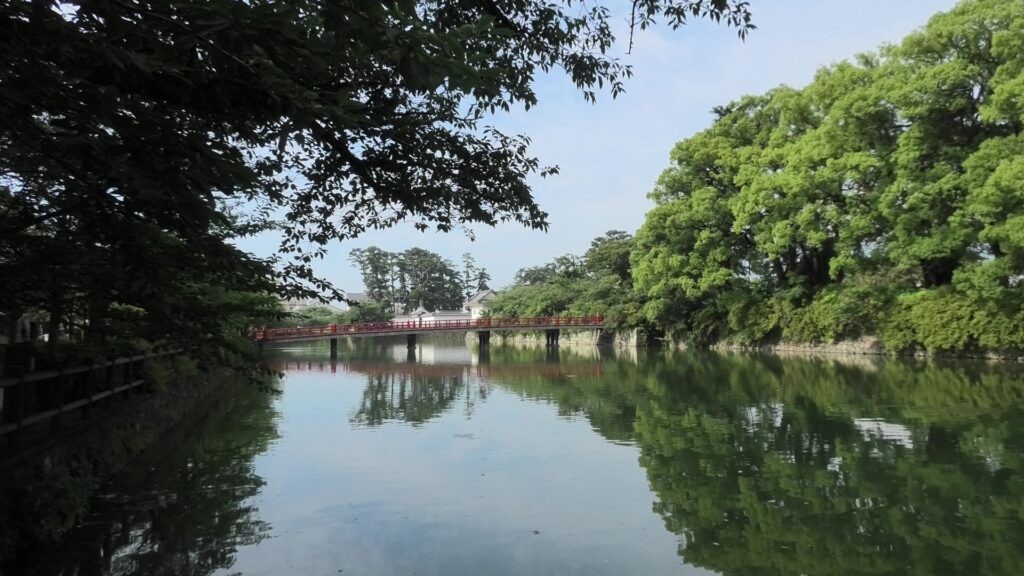
The first big crisis happened to Odawara Castle in 1561. Kenshin Uesugi invaded the Kanto Region from his home of Echigo Province, which is currently Nigata Prefecture, in order to revive his clan. Kenshin sieged Odawara Castle with his allies and over 100 thousand soldiers the following February (according to the luna calendar). However, the attackers withdrew soon as they did not prepare for a long siege. Ujiyasu Hojo, who was the lord of the clan, avoided fighting against Kenshin but waited patiently for the withdrawal. After Kenshin went back to his home, Ujiyasu got the territories and the retainers in the region back to the same side.

The second crisis occurred in October 1569 (according to the luna calendar). Shingen Takeda from Kai Province, which is currently Yamanashi Prefecture, invaded the Hojo’s territories and reached Odawara Castle on the 1st of October. Shingen first attacked the main gate, called Hasuike-mon (which means lotus-pond gate), and set the castle town on fire. Shingen’s troops also torched the hall of Ujimasa Hojo, Ujiyasu’s successor. Shingen stayed at Odawara for only five days and returned to his home. However, these two crises had a big impact on the Hojo Clan, especially on Ujimasa. When he followed his father’s position, he started to fortify Odawara Castle more and more. He probably thought that if he could build a castle that could withstand a long siege, no enemies would ever destroy it.

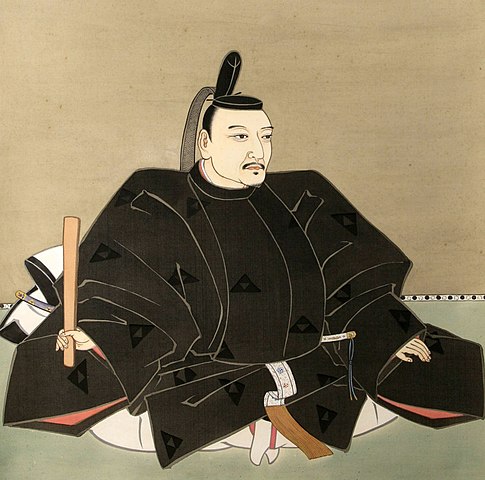

Completion of the Castle by Ujimasa and Ujinao Hojo
The Hojo Clan reached its peak in the period of Ujimasa and his successor, Ujinao. This was because Kenshin died in 1578 and the power of the Takeda Clan decreased. The Hojo ruled most of the Kanto Region and built the network of their branch castles to maintain their government. Odawara Castle became the center of it. Ujimasa also fortified the castle. For example, the third enclosure was built on a plain land around the second enclosure. After that, the outer third enclosure was also built on a hill behind the main portion of the castle. They were constructed to protect the castle from potential enemies attacking it from the front and from the back. Furthermore, a large ditch was built to separate the highest hill around the castle, called Komine-Okane-no-dai, next to the outer third enclosure. All of them were made using soil. It was dug to create very steep moats and was mounded to make high earthen walls. The soil around the area came from volcanic ash, which is called Kanto loam layer. It’s naturally slimy, which made enemies slipped when they walk on the surface. The bottoms of the moats were also partitioned forming many square partitions, called Shoji-bori (which means sliding paper door-moat) and Une-bori (which means hilling-moat). If enemies fell to the bottom, they would be trapped and would never be able to escape from it.
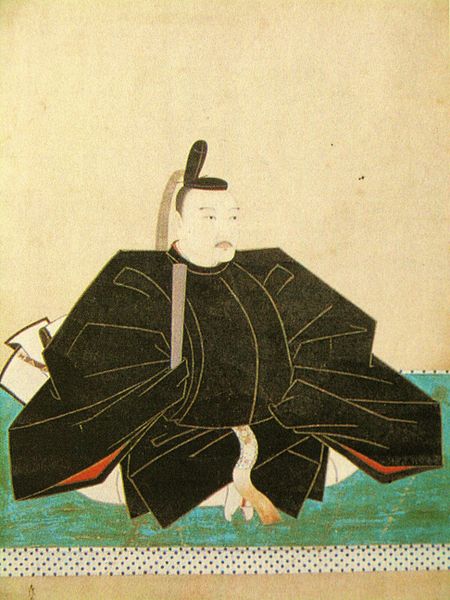
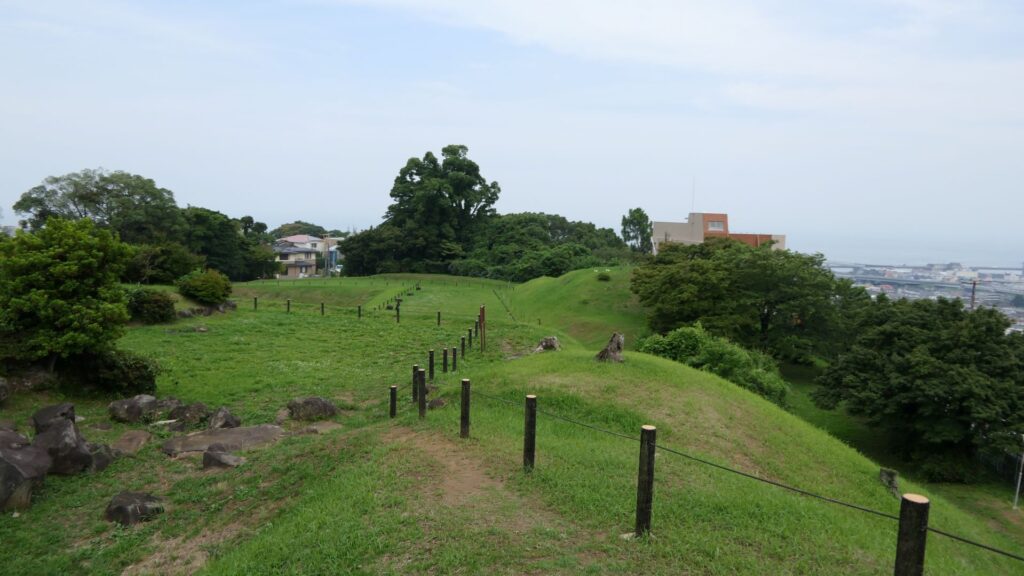
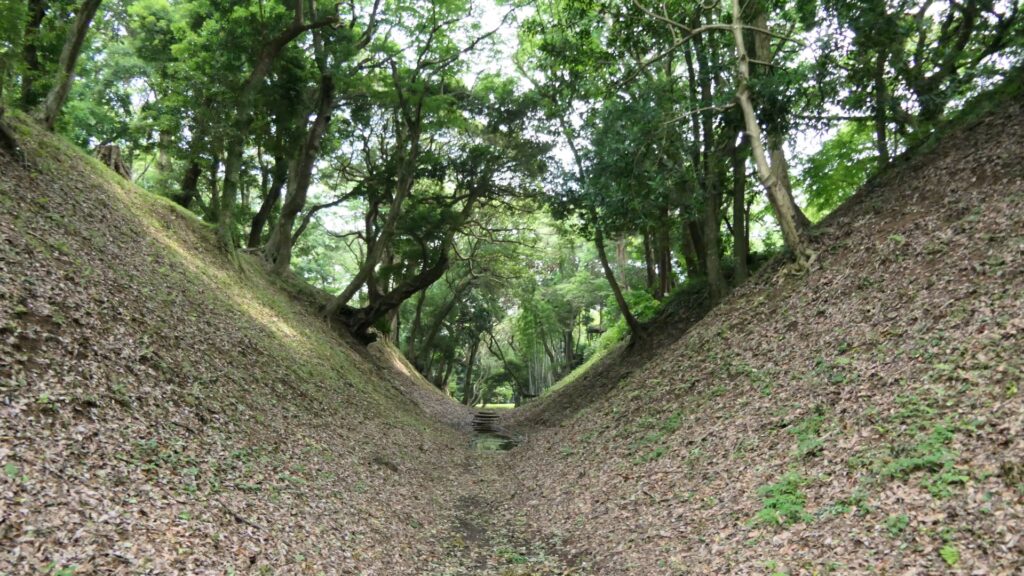
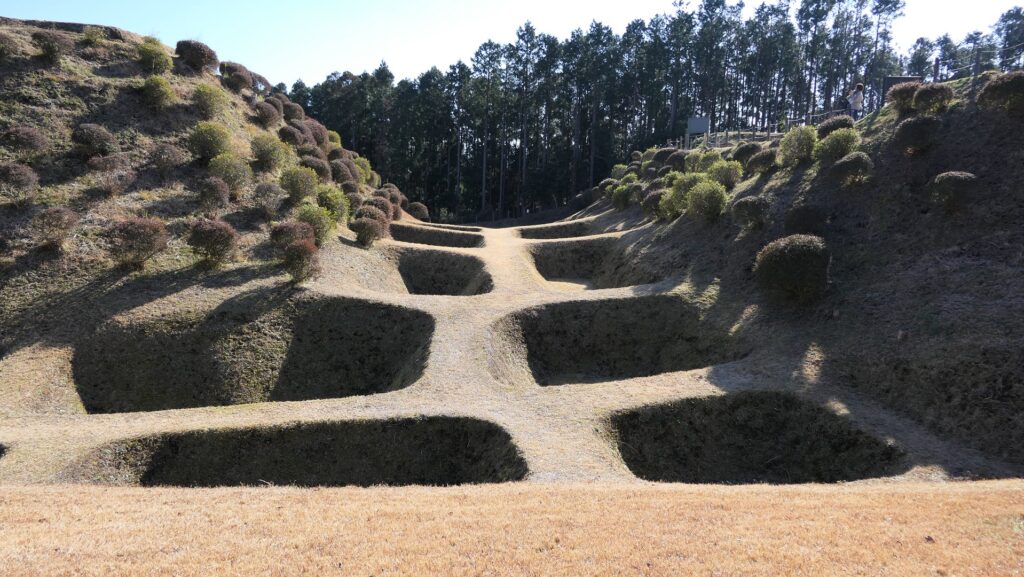
The development of the castle was related to the situation of the whole country and the diplomatic relations with other warlords. When Nobunaga Oda defeated the Takeda Clan in 1582, the Hojo was forced to be subordinate to Nobunaga. However, Nobunaga was killed during the Honnoji Incident in the same year. The Hojo, Tokugawa, Uesugi Clans battled each other in order to get the former territory of the Takeda Clan. A retainer of the Takeda Clan, the Sanada Clan gained power in order to be an independent lord by interrupting them. As time passed, Hideyoshi Toyotomi became the next ruler, ordering all the lords to stop fighting for themselves. Ujimasa ignored this new movement while other lords followed Hideyoshi by 1587. Ujimasa started a negotiation to serve the Hideyoshi side as well as the following year. One of the problems for the negotiation was about the Numata territory. There has been a dispute as to who was the true owner of the territory, between The Hojo Clan and Sanda Clan. Ujimasa asked Hideyoshi to resolve it. Hideyoshi’s decision was to give two thirds of the territory to the Hojo Clan and the other third to the Sanada Clan.




On the other hand, Ujimasa continued to fortify Odawara Castle in case the negotiations broke down. The highlight of it was to surround the entire area of Odawara including the castle, the town and the hills behind them. This was done by building moats and earthen walls, whose perimeter was about 9km long. This structure is generally called So-gamae (which means outermost enclosure). Ujimasa probably thought that enemies would never enter Odawara, because of this long perimeter, called So-gamae structure.


















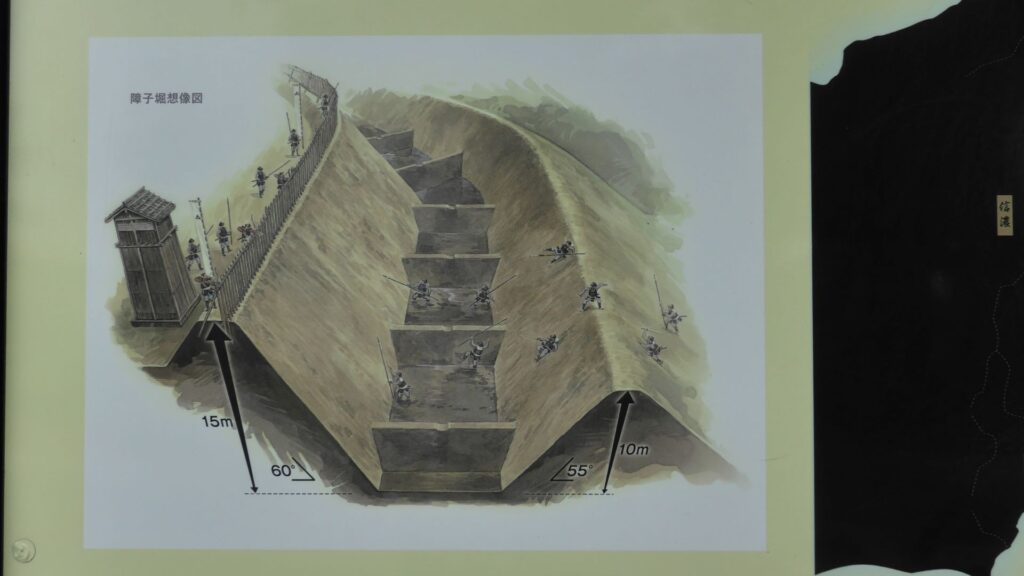
In October of 1589 (according to the luna calendar), an incident happened at the Numata territory. The Sanada Clan argued to Hideyoshi that the Hojo Clan forcibly got Nagurumi Castle on the Sanada’s side. This angered Hideyoshi and he finally decided to destroy the Hojo Clan completely. However, there are several questionable points about the incident. Some historians point out that It might have come from a deception of Hideyoshi and the Sanada Clan. Anyway, the battle between them may have been necessary. Hideyoshi wanted more territories to give to his retainers while Ujimasa didn’t want to surrender to Hideyoshi so easily. The So-gamae structure was eventually completed after the two-year constructions before the battle would happen.

Battle of Odawara
In March of 1590 (according to the luna calendar), about 220,000 of soldiers, led by Hideyoshi Toyotomi, rushed into the Hojo’s territories. The number of the Hojo’s defenders was said to be about 80,000. About 50,000 of them were in Odawara Castle. The Hojo Clan probably expected that their enemies would be weakened by the network of the Hojo’s branch castles before they reached Odawara Castle. If they sieged the castle in poor conditions, the Hojo Clan could make peace with them in better conditions. However, most of the Hojo’s soldiers were drafted farmers, nor were they experienced, nor were they trained, and nor were they motivated. The battles occurred on the 28th of March at Matsuida Castle in Kozuke Province (which is currently Gunma Prefecture), and on the 29th at Yamanaka and Nirayama Castles near Odawara. Surprisingly, Yamanaka Castle, which had strong defensive systems like Shoji-bori, was captured in less than one day by the overwhelmingly powerful military force of the Toyotomi side. After that, the castles’ network of the Hojo side eventually collapsed. As a result, only 5 out of tens of the branch castles survived at the end of May. That was the first miscalculation for the Hojo Clan.
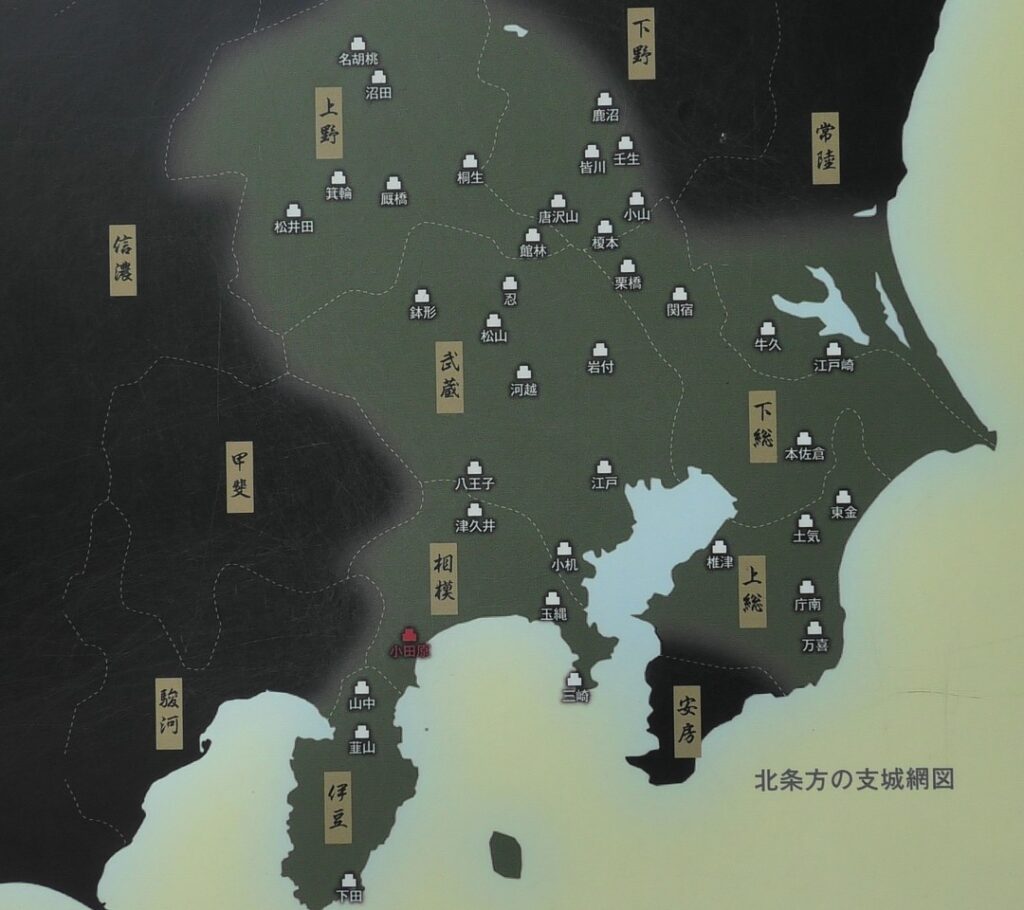
The Toyotomi’s troops reached Odawara Castle as early as in the beginning of April, surrounding the castle with about 180,000 soldiers. Hideyoshi launched the construction of his new stronghold, which would be called Ishigakiyama Castle, within the month. However, even with huge troops, they were not able to enter the castle, because they were blocked by the So-gamae structure. The structure was 30m wide at max and over 10m deep, with its slope at over 50 degrees. On the other hand, the Hojo side also miscalculated the features of the Toyotomi’s troops. Many of them were professionals and were equipped with enough supply systems. That meant they could survive in their battlefield for a very long time. They reached a much higher level in the combat than those of the Uesugi and Takeda Clans earlier on. As a result, the attackers and the defenders faced each other across the So-gamae structure in April and May.
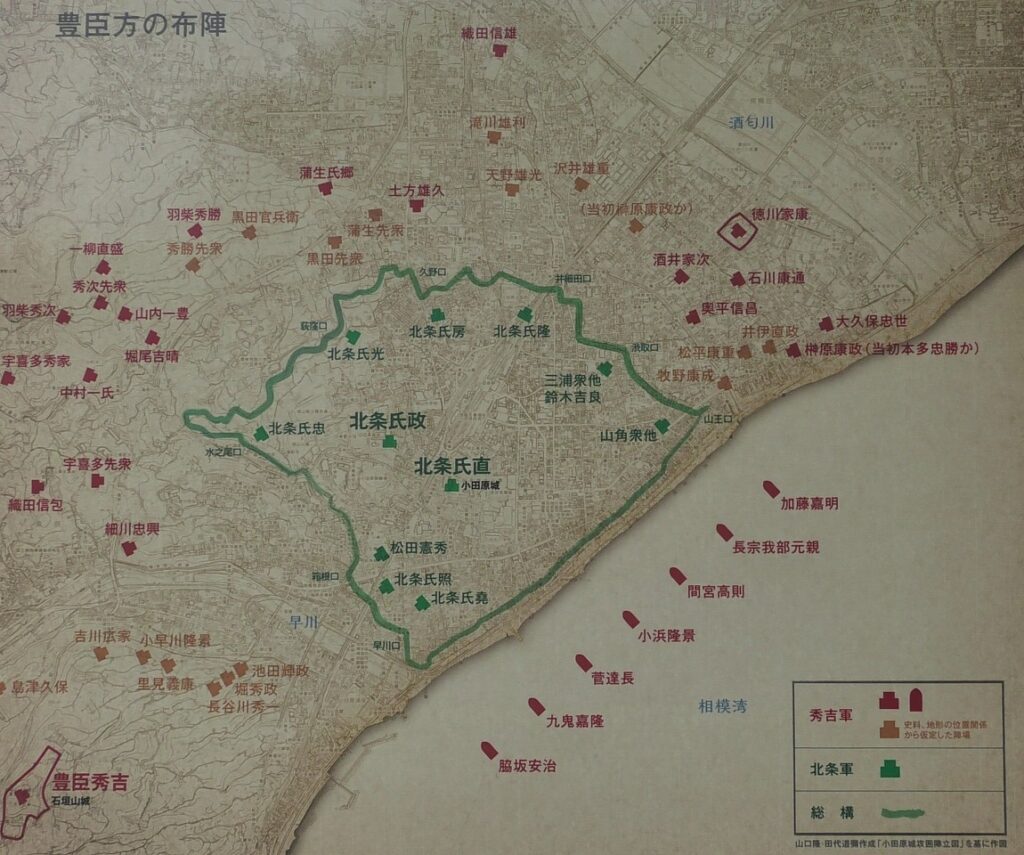
On the 5th of June, Masamune Date, who was the greatest warlord of the Tohoku Region, arrived at Odawara to serve Hideyoshi. That made the Hojo Clan know that no supporters would help them. The negotiation between the Toyotomi and Hojo sides started behind the scenes. Ujimasa’s successor, Ujinao Hojo was in charge of it. In Japanese, there is a figurative expression called “Odawara Hyojo” which means an inconclusive long conference. People generally think the Hojo didn’t know what to do during the siege. The fact might have been different from it. As time passed, four of the five surviving branch castles were captured in June. Only Oshi Castle was bearing being sieged by the Toyotomi troops like Odawara Castle. Ishigakiyama Castle, which had great stone walls, was completed on the 26th of June as Hideyoshi’s stronghold. Its appearance may have threatened the defenders of Odawara Castle, just a few kilometers away from it.
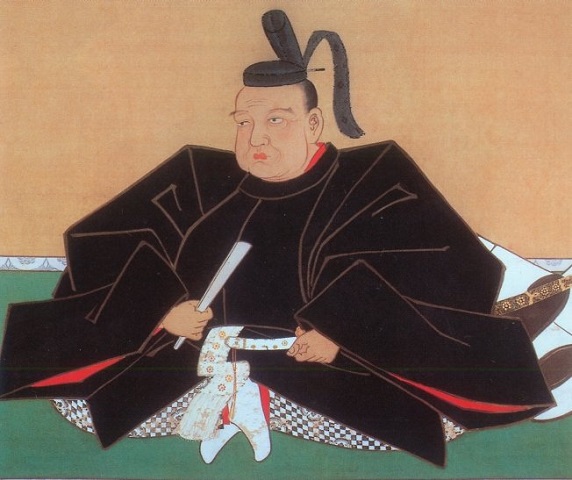
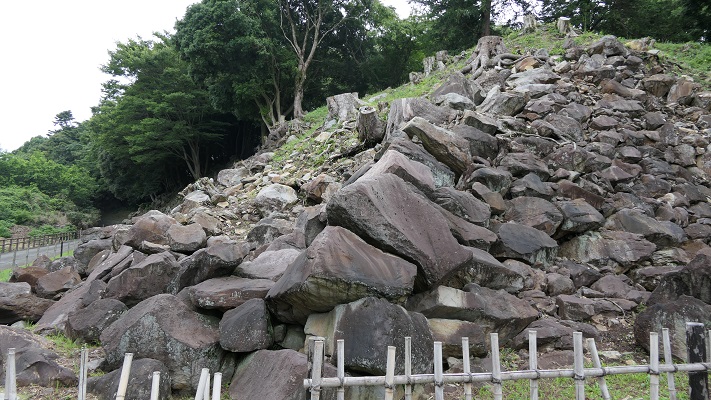
Ujinao finally surrendered to Hideyoshi on the 5th of July. It was said that the negotiation may have included a few territories reserved for the Hojo Clan. However, the decision of Hideyoshi, who completed his unification of Japan, was too strict to allow it. The four leaders of the Hojo side, including Ujimasa, were forced to do Harakiri. Even Ujinao, who made peace with Hideyoshi, was eventually expelled to Koyasan Temple. The Hojo Clan lost everything they had had. Some say that the decision had been planned from the beginning. The territorial allocation after the Battle of Odawara was as followed. Ieyasu Tokugawa moved from around the current Shizuoka Prefecture to the Kanto Region the Hojo Clan had had. Nobukatsu Oda, who was Nobunaga’s son but followed Hideyoshi, was also fired by Hideyoshi due to his rejection to move to Ieaysu’s previous territory. Hideyoshi gave the large vacant territories to his successor, Hidetsugu and his retainers. The satisfied retainers would monitor the actions of Ieyasu who was a potential enemy for Hideyoshi, killing two birds with one stone. In addition, the Sanada Clan got all of the Numata territory after the battle. Were they all coincidental?
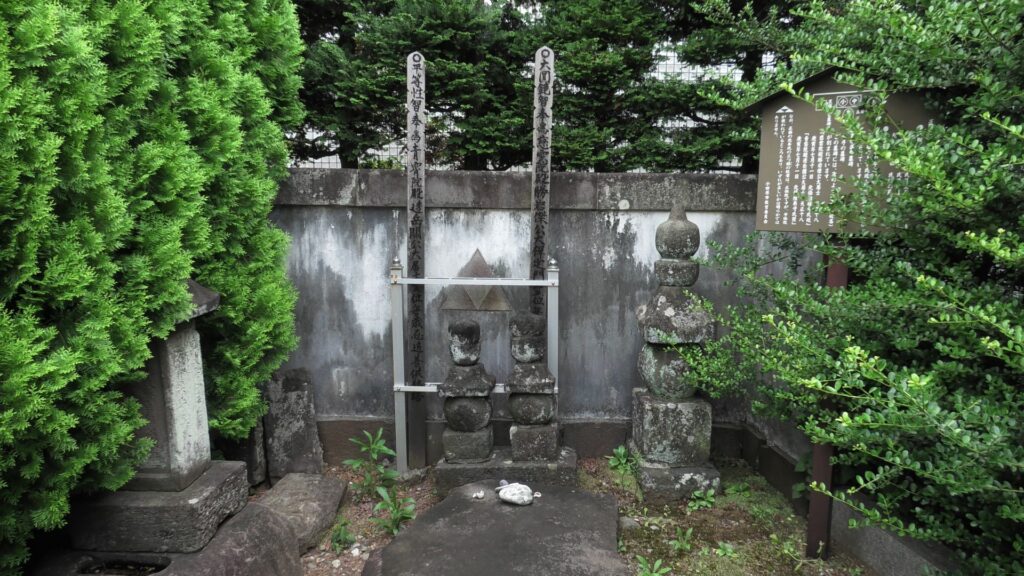
The Hojo Clan declined but Odawara Castle with the So-gamae structure was very effective against the attackers. For example, it was recorded that Kazuuji Nakamura, who owned Sunpu Castle, built So-gamae structure for his castle, too. In fact, Hideyoshi Toyotomi also built very long earthen walls to surround Kyoto, called O-doi, whose perimeter was about 23 km long. It was recently discovered that the walls had the Shoji-bori system. Hideyoshi also improved his home, Osaka Castle by building So-gamae structure from 1594. Some other lords, who joined the Battle of Odawara, built their own So-gamae as well, probably influenced by Odawara Castle.
